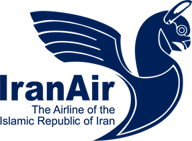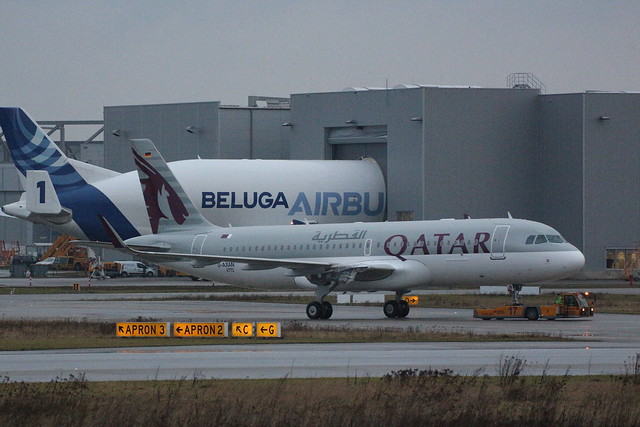Leeham News and Analysis
There's more to real news than a news release.
Iran Air, Volga Dnepr deals help Boeing production gaps but don’t solve them
Subscription Required
Introduction
 June 24, 2016, (c) Leeham Co.: Boeing’s recent deal with Iran Air for 100 737s, 777s and 747s and its indication that a Memorandum of Understanding with Volga Dnepr may be firmed up will help fill production gaps on the 777 Classic and 747-8 lines. But these transactions won’t fully fill the gaps.
June 24, 2016, (c) Leeham Co.: Boeing’s recent deal with Iran Air for 100 737s, 777s and 747s and its indication that a Memorandum of Understanding with Volga Dnepr may be firmed up will help fill production gaps on the 777 Classic and 747-8 lines. But these transactions won’t fully fill the gaps.
Boeing declined to detail the breakdown of its order–which is still subject to US government approval–but Reuters and The Wall Street Journal obtained the detailed list.
The Volga Dnepr MOU was announced last year at the Paris Air Show for up to 20 747-8Fs. This month, news emerged that this MOU appears to be firming up for 10 plus options or commitments. This contract may be announced at the Farnborough Air Show.
Summary
- Iran Air deal includes four 747-8s and 15 777-300ERs. Helpful, but not enough to fill the production gaps.
- Volga’s firming of 10 orders is helpful for the 747-8, but even at a reduced production rate of six airplanes per year, a significant gap remains.
Fuel prices rising, muted wide-body demand noted by analysts

Oil prices are rising and catching the attention of airline and aerospace analysts. Photo via Google images.
June 22, 2016: Our weekly synopsis of select analyst notes point to increasing fuel costs and weak wide-body demand, among other things, as issues to consider.
Highlights:
- A350 deliveries at risk due to Zodiac supplier issues. (Buckingham.)
- US airline stock is under pressure due to rising fuel prices. (Cowen & Co.)
- Stock for supplier Crane is rising due in part to rising oil prices. (CanaccordGenuity.)
- Global traffic growing at a slower rate than forecast. Wide-body demand muted. (JP Morgan.)
- Production rate increases at Boeing may be challenging. (Wells Fargo.)
Thinking outside the box at Pratt & Whitney
June 16, 2016, © Leeham Co.: “I’m working on six or eight engines. The more the better.”
![]() This startling statement comes from Alan Epstein, vice president of technology and the environment for Pratt & Whitney.
This startling statement comes from Alan Epstein, vice president of technology and the environment for Pratt & Whitney.
It runs counter to everything the airline industry has believed since the introduction of the twin-engine Boeing 767 was qualified for ETOPS in the early 1980s: fewer engines are better.
Epstein explained his statement during an interview with LNC at the United Technologies Media Days last week in Hartford (CT).
Epstein last year at the same event told LNC he was looking at four-engine technology for future airplanes. We asked him this year if he was still looking at four engines. That’s when he said he was looking at six.
It’s his job to think outside the box. This one clearly qualifies.
Mid-Market airplane comes before A320, 737 replacement: Pratt & Whitney exec
Subscription Required
Introduction
June 16, 2016, © Leeham Co.: A middle of the market airplane will come before a replacement for the Airbus A320 and Boeing 737, predicts Alan Epstein, vice
Alan Epstein, VP technology and environment, Pratt & Whitney.
president of technology and the environment for Pratt & Whitney.
“The challenge to the business of the narrow-bodies is the A320s and the 737s are so learned-out that Boeing and Airbus are so efficient at building those airplanes, that their inherent cost is so low, it’s extremely difficult to move into that market,” Epstein said. “Because the learning curve, you need incredibly deep pockets and you’re going to be negative for a long time.
“I think that also applies to Airbus and Boeing,” Epstein said, referring to the prospect of a new single-aisle aircraft.
Summary
- New single aisle airplane would be a “white elephant” for 10 years.
- Engines need to be at least 10% more efficient than today’s GTF and LEAP for a new single-aisle aircraft.
- Middle-Market airplane likely to come first.
Weekly analyst note synopses
Note: LNC begins today a weekly synopsis of select analyst notes we receive in the previous seven days.
Highlights:
- Delta Air Lines guides down on weaker PRASM.
- Garuda claims it’s now a buyer’s market for new aircraft.
- Interior supplier B/E Aerospace sees a bright future.
- Boeing’s 787 deferred production plans faces challenges
- Irkut is pricing the MC-21 15%-20% under the Airbus A320neo and Boeing 737-8.
Inexpensive real-time FDR system developed by California firm

The flight test pattern of a Thompson Aerospace real-time data transmission on a Boeing airplane. Click on image to enlarge.
June 14, 2016, © Leeham Co.: Egyptair Flight MS804 disappeared from radar May 19 and there is very little known about the last minutes of the flight at this writing.
A French ship two weeks ago reported hearing pings on the same frequency as the flight’s black boxes. As yet, the pinging hasn’t been confirmed as being from those boxes (remember the false alarm on the Malaysia Airlines MH370 search). The main wreckage and these boxes have yet to be discovered.
With the designed 30-day battery life of the pinger expiring just days away, this is yet another example of why real-time transmission of flight data from the airplane to the ground is needed.
As with MH370, followed by Air Asia Flight 8501 (whose boxes and wreckage were eventually discovered and recovered), the mystery surrounding MS804 spur new calls for action to provide real-time data streaming of a flight’s important information about the performance of the airplane and any anomalies.
Airbus officials aid during their Innovation Days presentations last week they are studying real-time data streaming. ICAO, the international organization the sets rules and requirements for the world’s airlines, has moved slowly since MH370 but now appears ready by year-end to establish requirements and deadlines for real-time data streaming.
Cost and bandwidth have been cited as principal obstacles to overcome.
But a small company in California says the technology is here today at an affordable cost, and it is fully compliant with ICAO standards.
Slowing economies begin to impact Airbus, Boeing
Subscription Required
Introduction

LatAm Airbus A350. LatAm may defer some A350s and/or Boeing 787s. Photo: Flickr via Google images.
June 13, 2016, © Leeham Co.: Signs are becoming more frequent that airlines are facing slowing economies around the globe, with impacts on existing orders in the backlog.
Last week JetBlue said it is trimming growth on rising fuel costs and softening revenue. LatAm also said last week that it plans to trim some Airbus A350 and Boeing 787 orders amid slumping traffic in Brazil. Delta Air Lines previously said it will defer four A350s and trimming growth due to slowing economy.
Summary
- Wide-body sales slowing this year.
- 787 Surplus developed.
- A330neo sales stall.
- A350-2000 on hold.
- 777 Classic sales stall.
- Cargo demand still anemic, says IATA.
UTAS sees increasing electronic architecture in future airplanes
Subscription Required
Introduction
![]() June 9, 2016, © Leeham Co.: The debate continues whether the next new, clean-sheet airplane will be a Middle of the Market aircraft (MOMA) or replacements for the Airbus A320 and Boeing 737 families.
June 9, 2016, © Leeham Co.: The debate continues whether the next new, clean-sheet airplane will be a Middle of the Market aircraft (MOMA) or replacements for the Airbus A320 and Boeing 737 families.
Along with he studies of new airplanes are those undertaken by suppliers. Electric Systems, a unit of United Technologies Aerosystems (UTAS), is working with the OEMs to determine what level of electric systems will be used in the new aircraft, whatever is selected to go next.
Summary
- Electric systems on the Boeing 787 are up to 80% more efficient than those on the Boeing 777 Classic.
- The 777X retains the Classic systems or commonality.
- Benefits decline the shorter the flight.



